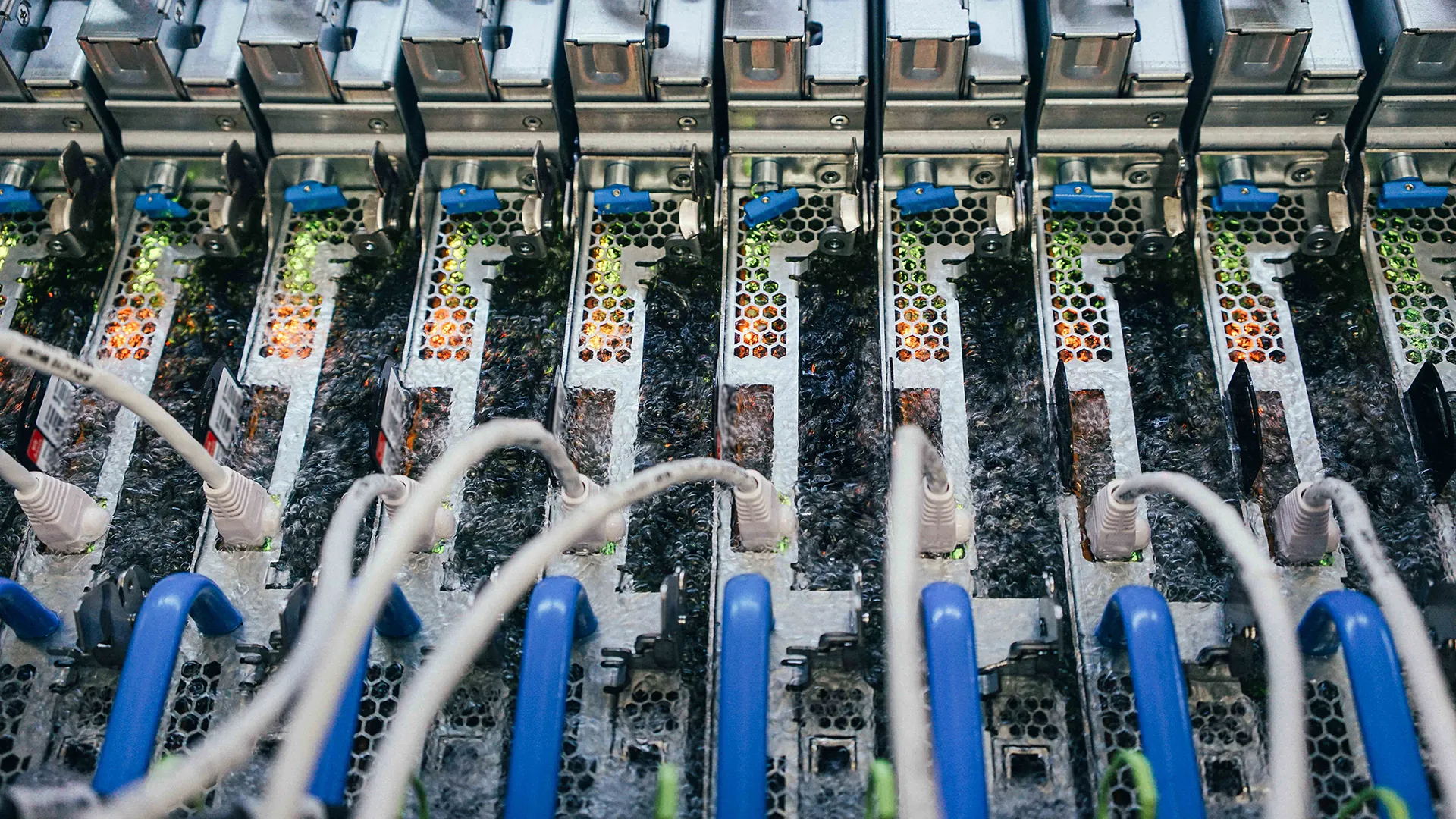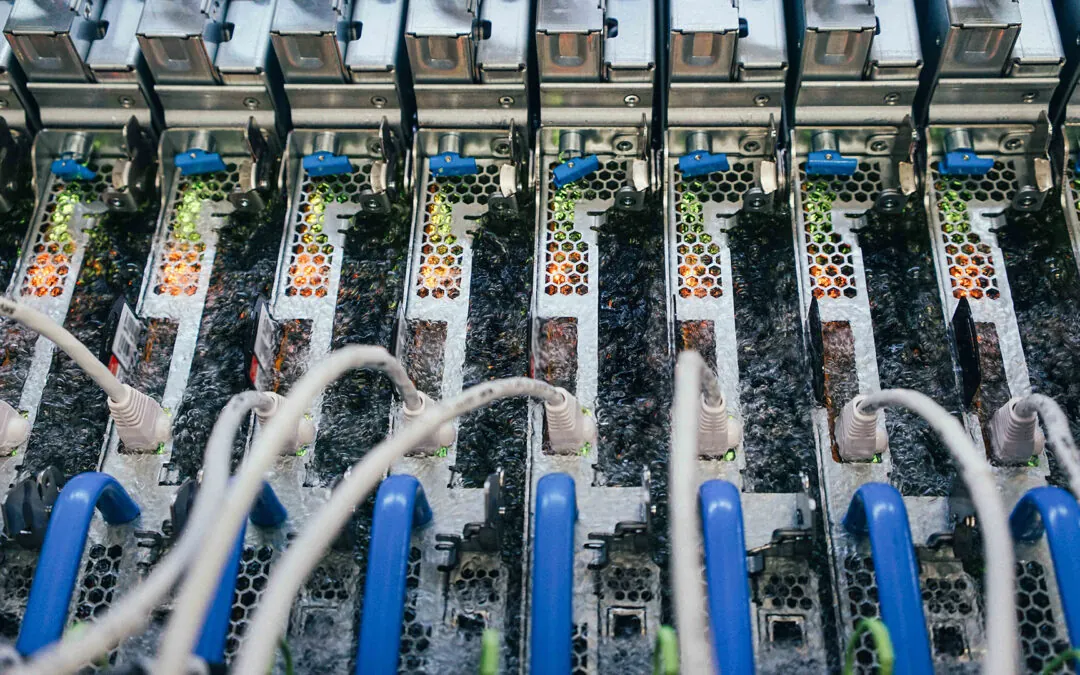Exploring Immersion Cooling – Part 2: The Challenges19 min read

Liquid cooling and especially two-phase immersion cooling have received a lot of hype over the last couple of years. Part one of this two-part series explained the attractiveness of immersion cooling and laid out its many advantages. Some go so far as to insist that it is the next big thing and will take over the bulk of the data center cooling business. A brief search online reveals several reports from several somewhat obscure analyst firms claiming the technology is about to explode. But why is it you don’t hear such bullish market estimates coming from established analyst firms such as Gartner, IDC, and Forrester Research? It appears that the expected explosive growth of two-phase immersion technologies has failed to materialize.
Part of the reason for reticence in some circles is that two-phase immersion is running into serious teething troubles. This could be part of its growth trajectory. Any technology runs into roadblocks that must be overcome as it journeys from being a novelty into maturity. The challenges facing two-phase immersion cooling include a series of health, corrosion, rust, and safety concerns. Until these are fully addressed, the technology is likely to feature mainly in a few pilot or experimental installations by those with deep pockets.
Let’s go through some of these challenges and briefly cover what the industry is doing to overcome them.
Fluid Toxicity
One major barrier that has emerged of late is the toxic nature of the chemicals used in the fluids used in two-phase immersion cooling. So much so that companies who supply these fluids are halting production of the chemicals due to lawsuits cropping up that could cost the billions if lost. The suits name PFAS (per- and polyfluoroalkyl substance) which are regarded as forever chemicals that don’t break down naturally and can cause cancer. One $10B settlement with US towns over PFAS is currently under negotiation.
Microsoft and Meta have backed away from two-phase immersion cooling research due to the toxic side effects of the chemicals involved. Liquid cooling specialists, too, have largely paused their two-phase immersion efforts.
“Like many others in the industry, we have stepped back from two-phase immersion cooling due to identified refrigerant challenges,” said Simon Brady, Liquid Cooling Product Manager, Vertiv.
Note that these toxicity problems relate mainly to two-phase immersion cooling. The fluids used in single-phase immersion are typically more benign and have far fewer liabilities.
Corrosion
If you are immersing expensive hardware in fluid, it better not be corrosive. However, some of the fluids used in immersion cooling are potentially more corrosive than was first realized.
Some vendors use mineral and white oils to act as the heat transfer fluids in immersion cooling. They have relatively low cost and good dielectric properties but generally have certain sulfur compounds within them that promote corrosion. They can directly attack copper and zinc in electronics. Further, sulfur ions can combine in solution with copper ions to form copper.
“One of the most difficult things about addressing corrosive sulfur issues is that these types of failures are often consider random device failures because the mechanism of corrosive sulfur attack is not well understood or well considered,” said Dr. David Sundin, Chief Scientist at Engineered Fluids, a company promoting green immersion cooling solutions.
Bacteria
Bacteria are more of a problem with water-based liquid cooling, but issues have cropped up with dielectric fluids. Heat acts as a catalyst for chemical reactions and breeds more bacteria within many fluids. When water becomes ionized and runs between aluminum and copper, for example, electrons are transferred. Degradation and discoloration can result. Even highly distilled water has very minute of minerals and other substances within it which promote further degradation. Corrosion inhibitors protect against this process. Adding a small amount of silver to the water is another way to make the water loop uninhabitable for most forms of life. Biocides, too, are sometimes introduced in small dosages to kill bacteria.
Tanks and Tubing
The material used in immersion cooling tanks and tubing can also cause problems. 3M issued best practices for two-phase immersion tanks that recommended that they not be made from plastics as they contain and transfer moisture that becomes a burden on the tank’s drying system. Tanks can be fabricated from glass, but edge sealing of glass panels can be problematic. Ideally, tanks should be constructed from welded metals such as stainless steel, carbon steel or aluminum. Reinforcements are often needed due to the fluid’s hydrostatic pressure. Metals generally need to be painted or have a powder coat added to the interior and sealing surfaces to prevent oxidation from moisture condensation.
Cabling, too, should be chosen carefully. If polyvinyl chloride (PVC) cladding is used, be aware that it contains 3-30% oil by weight and this oil can contaminate the fluids. Some recommend pre-cleaning cables and vapor degreasing. Although this removes most of the oil, some remains. Removing it from the fluid requires a fluid conditioning system. PVC cable jackets may stiffen over time when immersed in liquid coolant. Data center personnel can either regularly swap out Ethernet and other PVC-based cables or use cables with synthetic rubber cladding which are unaffected by the fluids.
Leakage
OEMs of immersion cooling solutions go to great lengths to prevent leakage. But liquid of any kind tends to find a way eventually. Leaks could have devastating consequences for data center equipment. Complete failures of immersion systems could flood the entire facility. Insurance firms and equipment vendors may be hesitant to award policies or honor warranties for systems damaged due to immersion fluid leakage. Be aware, too, that fluids will eventually reach the end of their life and must be disposed of if deemed hazardous. That adds cost.
Maintenance
If IT equipment is submerged, maintenance becomes a serious challenge. Most current data centers are not prepared for server maintenance in an aquatic setting. The implications include: staff may need wet suits; they may need to be trained and certified in diving; and cranes may be required above immersion systems to haul the servers out.
Space
Immersion cooling places plenty of constraints on data center design. Cranes need several feet of room above racks. Many data centers don’t have enough space. Some ceilings may not be able to bear the weight of a crane that must be capable of hauling immersion systems around. Even without cranes, immersion racks are often wider and deeper than traditional racks. Room reconfiguration is probably going to be called for. Inevitably, space constraints alone will outlaw immersion solutions in many facilities.
Leave Two-Phase to Others – For Now
There are plenty of vendors, large enterprises, research labs, supercomputing centers, and hyperscalers around who are investing in immersion cooling and figuring out the solutions to the challenges of immersion cooling technology. Solutions are likely to appear eventually. When that happens, two-phase immersion will have an opportunity to transition from the periphery into the mainstream.
Better fluids are already emerging. Submer’s synthetic dielectric coolant, for example, prevents oxidation by forming a barrier to moisture present in the air and referring to rust, but also because specific additives in our specially crafted liquid help prevent the destabilization or loss of electrons. Other vendors are researching solutions.
“We are looking at options that could provide better, safer cooling and more eco-friendly refrigerant options,” said Brady. “There is interest in developing plant-based chemicals that are more environmentally friendly.”
China’s KeenCool has developed a single-phase immersion coolant fluid and claims that it is less than 10% of the cost of commercially available fluids, according to Vladimir Galabov, an analyst at Omdia.
“As new challenges are overcome the immersion cooling prices will be pushed down,” he said.
These breakthroughs will either open the door to a two-phase revival or will be incorporated into single-phase immersion cooling systems, where applicable.
Real-time monitoring, data-driven optimization.
Immersive software, innovative sensors and expert thermal services to monitor,
manage, and maximize the power and cooling infrastructure for critical
data center environments.
Real-time monitoring, data-driven optimization.
Immersive software, innovative sensors and expert thermal services to monitor, manage, and maximize the power and cooling infrastructure for critical data center environments.

Drew Robb
Writing and Editing Consultant and Contractor

0 Comments